The Conspit 300GT in a nutshell
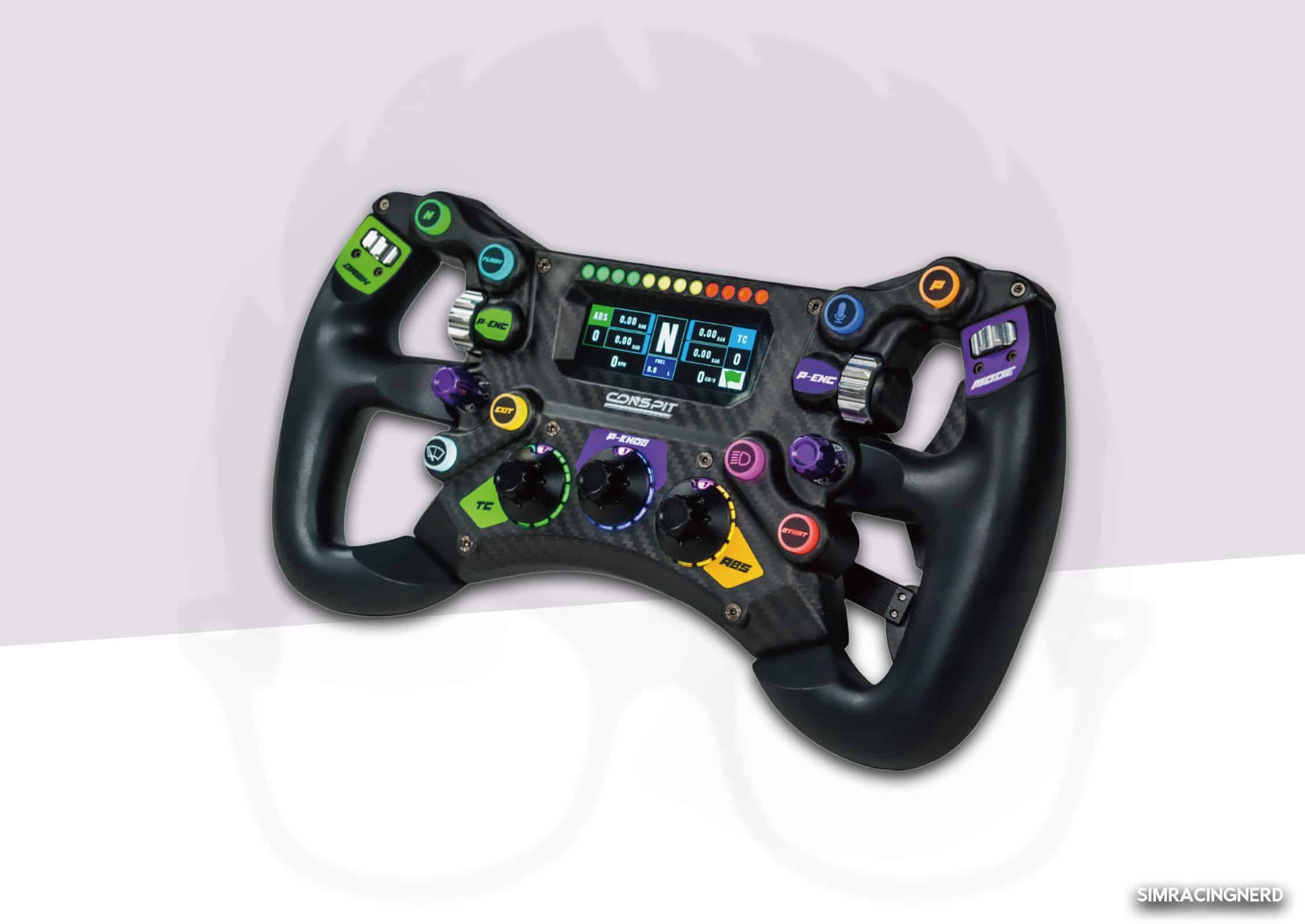
Advantages & Disadvantages
✅ Aluminum alloy structure and 3D carbon fiber faceplate
✅ Central screen for telemetry data
✅ Compatible with many Direct Drive bases from other brands
✅ Very attractive selling price
❌ Small front screen not even 3”
❌ Steering wheel comes without brand QR for those who own Conspit bases, and it’s priced in the €100s
The sim-racing market is made up of several players, with brands that we know and have been present for a long time, but also others that fly under the radar but offer a rather successful range.
Typically, and this also applies to markets other than sim-racing, you go for a popular brand with both a good marketing team and products to back it up. But there are of course lesser-known names in the industry, like Conspit for example, which is a Chinese manufacturer of sim-racing peripherals, and offers a good range of products.
Speaking of sim-racing equipment, today we have the Conspit 300GT on our setup. It’s a GT-style steering wheel that’s aimed at the Simagic GT Neo, while offering much more functionality for a little more money.
Main and technical features of the steering wheel
- 30 cm diameter flywheel with rectangular shape
- CNC aluminum alloy frame and 3D carbon fiber faceplate
- TPU EnduroGrips handles
- 8 backlit buttons with sticker function
- 4 rotary encoders for thumbs and handles
- 3 rotary encoders with 12 positions below the central display, including one for customizing the actions of the 2 encoders on the handles
- 2 Fanatec funky switches on the sides of the front panel
- Rear: 2 indexing buttons and 4 paddles
- 2 magnetic vanes with adjustable spacing, and 2 progressive vanes for Dual Clutch or other configurations
- Weight 1.32 kg with branded QR (sold separately)
- PC-compatible via USB connection
- Rear hub with 70 and 50 mm pattern to accommodate many QRs on the market
- RevLED at the top of the screen, which is almost 3” diagonal
- SimHub compatible for LED settings
300GT design
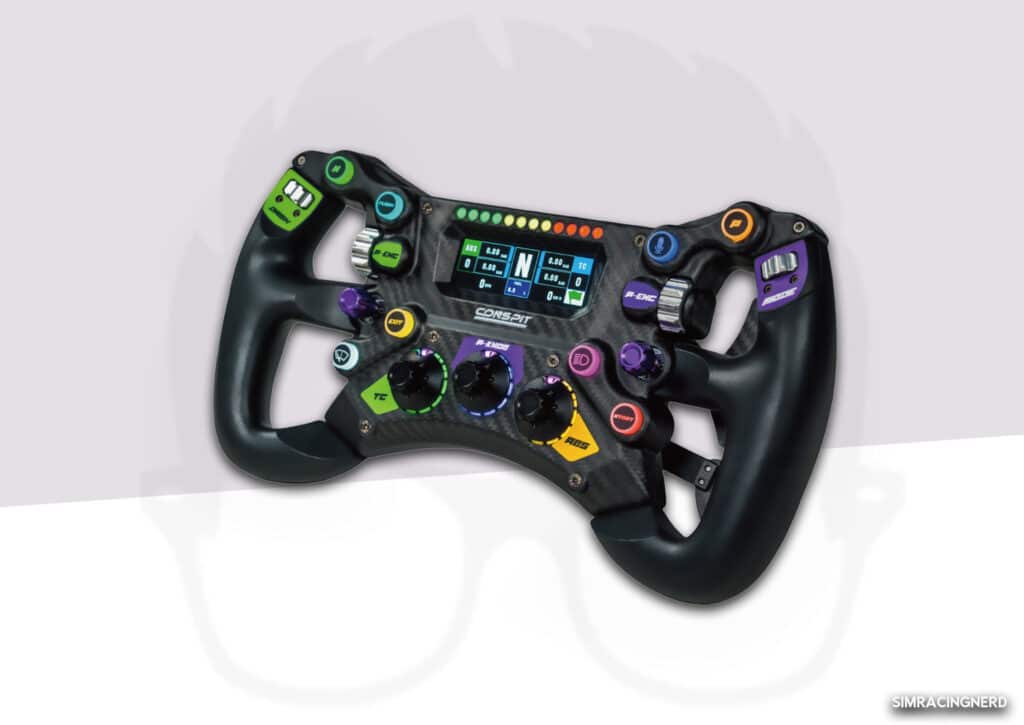
Let’s start with the design of this steering wheel. It’s a rectangular wheel with a carbon-fiber faceplate. This isn’t carbon-fiber-reinforced plastic, it’s 12-layer 3D CF.
The front panel features all the steering wheel controls, with transparent buttons, funky purple switches and silver rotary encoders. There’s also a small, almost 3″ screen at the top of the steering wheel, and LEDs on top.
The 300GT is a sober wheel, playing on shades of black. It will go perfectly with all sim-racing set-ups, whether flashy or more minimalist.
Customized assembly
To mount the 300GT on a Direct Drive base, you have two routes open to you. The first is to use the Conspit ecosystem with one of the brand’s DD bases, and the second is to call on bases from other brands.
If you already have a DD base from Fanatec, Simagic, Asetek or any of the other names present on the premium sim-racing market, you’ll need the brand’s QR hub to attach the steering wheel to it. The pattern is 50 and 70 mm at the rear, which should accommodate a good number of hubs and QRs too.
However, there’s one point I didn’t like so much about Conspit, and that’s the fact that the brand doesn’t bundle its QR with its steering wheel. Instead, the manufacturer wants you to add the QR to your shopping cart for around a hundred euros.
Manufacturing and finishing the 300GT
The materials used on the 300GT are aluminum alloy and carbon fiber. The steering wheel structure is metal, and FC is used only on the faceplate and paddles. The grips are made of high-grade TPU to offer a good level of grip and also greatly limit perspiration when riding without gloves.
As far as the steering wheel finish is concerned, there are a few areas for improvement, notably the joints. I noticed several gaps on the steering wheel, especially at the rear in the carbon fiber. Structurally, there’s nothing wrong with the steering wheel, but the visual aspect leaves a bit to be desired, especially when you have the LEDs on and the light oozing slightly from the top of the wheel.
Handling the steering wheel
With its rectangular shape and 30 cm diameter, the 300GT is easy to grip for GT fans. The grips offer an excellent level of grip, especially with the TPU EndurGrip used. You won’t really break a sweat on long sim-racing sessions, yet you’ll be very comfortable with the 300GT.
As for the buttons, some are easily accessible on the fly, and the rest you’ll have to take your hands off the handles. At the rear, there are 4 paddles, 2 magnetic and 2 progressive. The magnetic ones are adjustable in spacing, and you can also swap the magnets to change the force required to operate them.
As for the screen, it displays telemetry data that Conspit’s software retrieves from the sim-racing track, offering you a few dashboards according to your preferences. This steering wheel is SimHub-compatible, but unfortunately only for LEDs.
Sensations during play
How does the 300GT feel in sim-racing and on a setup? Depending on your base, you’ll get a totally different feeling, and I imagine you already know that.
As far as I’m concerned, I carried out my tests on a Fanatec ClubSport DD+ and the Podium hub as Quick Release. The 300GT feels very good in absolute terms, as long as the software doesn’t play up. Let me explain: everything works normally until, from time to time, the Conspit software crashes, and all the steering wheel telemetry goes to hell. It’s not a setup problem, because I’ve done tests on an Asetek base, and it was the same. I’m not too worried about the software, because it’s getting better.
Let’s move on to the rest. I really enjoyed the steering wheel’s various functions, such as swapping the paddle magnets, and its overall ergonomics. I quickly found my bearings on it, and the 300GT is a good steering wheel for GT fans.
The EnduGrip grips are just superb to use, especially if you’re not the glove type. Your hands won’t sweat, even during long sim-racing sessions. This material remains a very good alternative to leather and alcantara, which require gloves to care for.
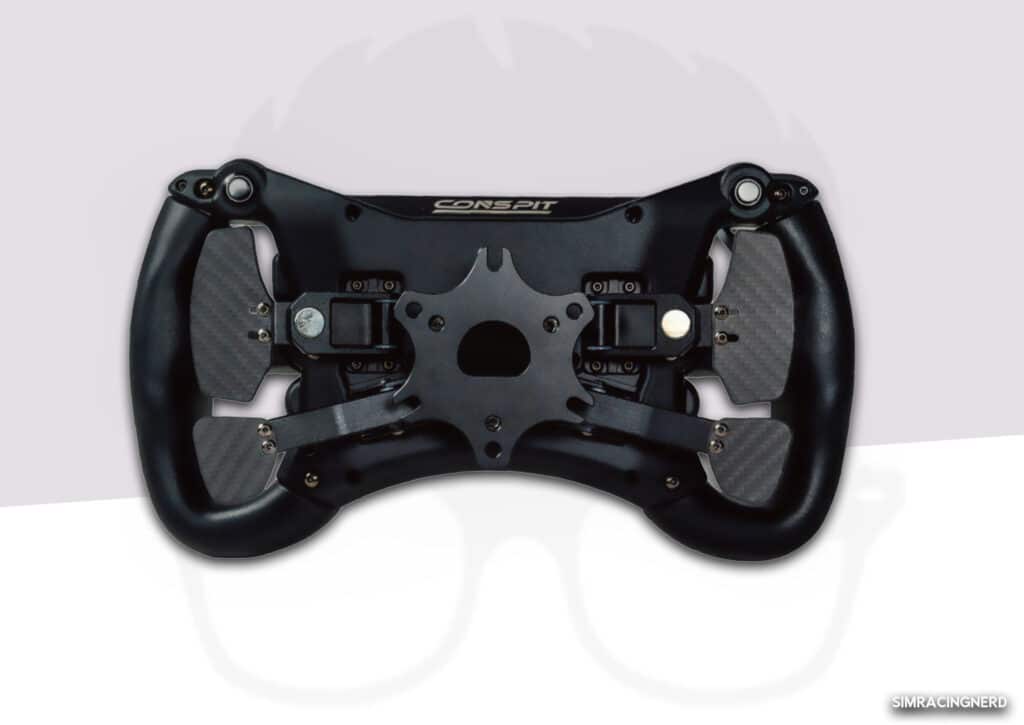
300GT wheel compatibility
Conspit’s 300GT is compatible with the brand’s bases via the QR which is sold separately, and also with other Direct Drive bases if you own their hub. This is made possible by a USB connection to the PC, with a plug like the one used in aviation on the steering wheel.
As far as platforms are concerned, it’s obviously all Windows PCs, and that’s unlikely to change when we see Moza and Asetek limited to this platform.
Value for money
Currently, and depending on the retailer, the 300GT trades for around €450 online. The price is very good, competitive and you get what you pay for. Admittedly, the finish is slightly inferior to that of Simagic or Fanatec, for example, but that’s correctable, and I didn’t notice any joints that were a hair too large, that’s all.
My verdict on Conspit’s 300GT steering wheel
The Conspit 300GT punches well above its weight class, offering features typically found on €600 – €700 wheels. It’s beautiful, functional and I find it very good for GT fans. As far as I’m concerned, the 300GT is a wheel I’d recommend, but wait until the software is more stable before taking the plunge. And if you don’t mind driving without the steering wheel’s telemetry, you can buy it right now.

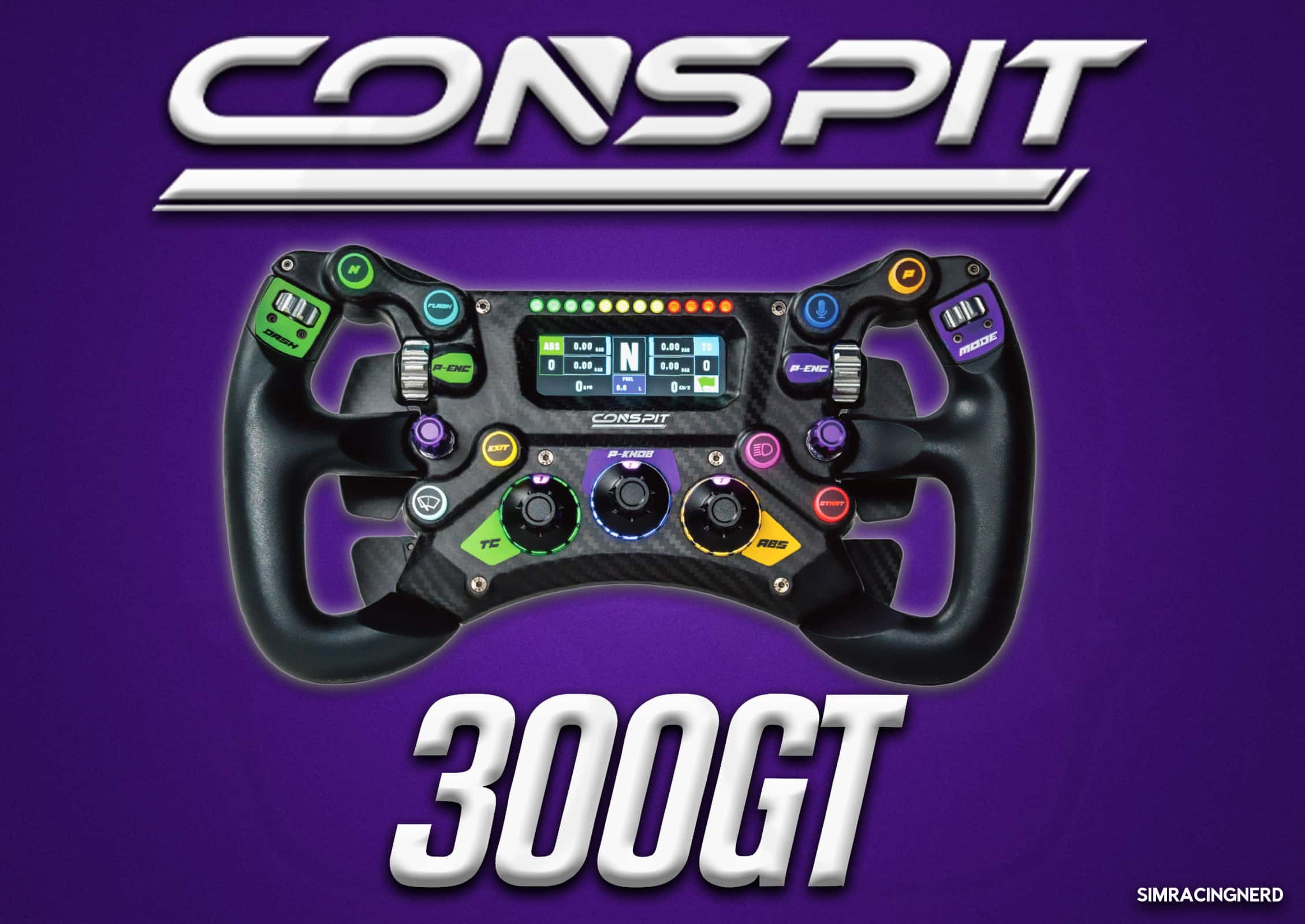
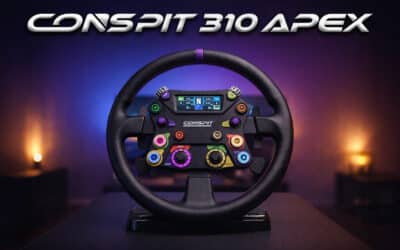
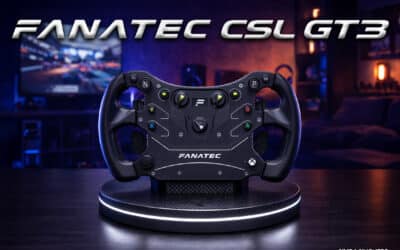


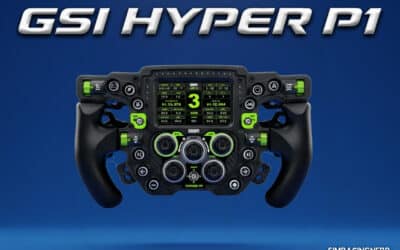
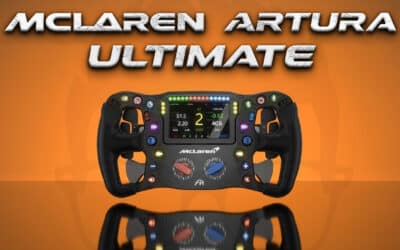
0 Comments